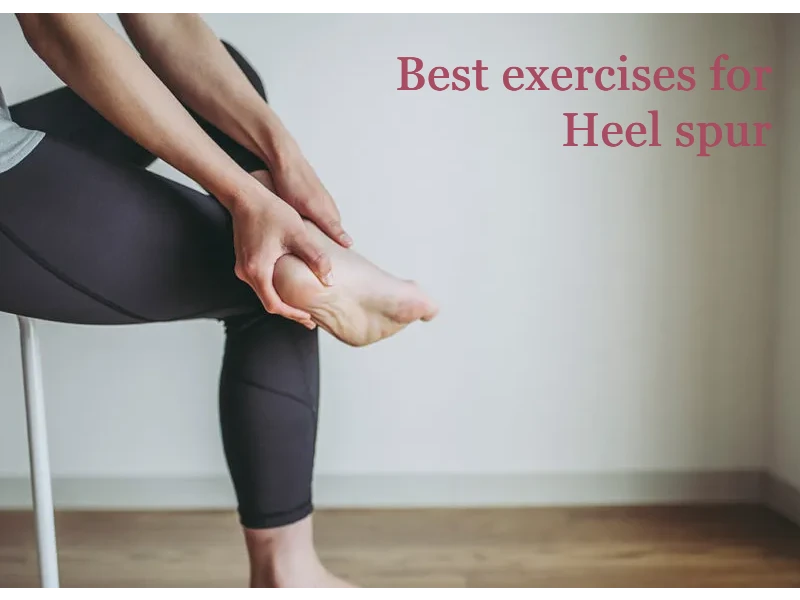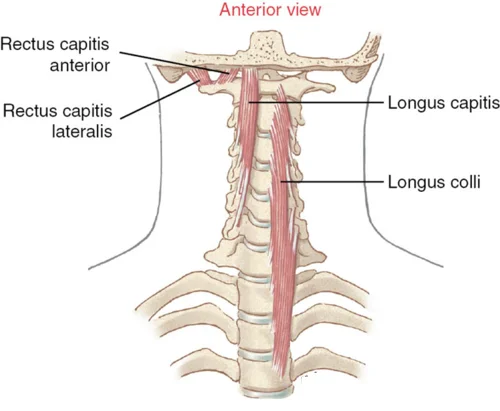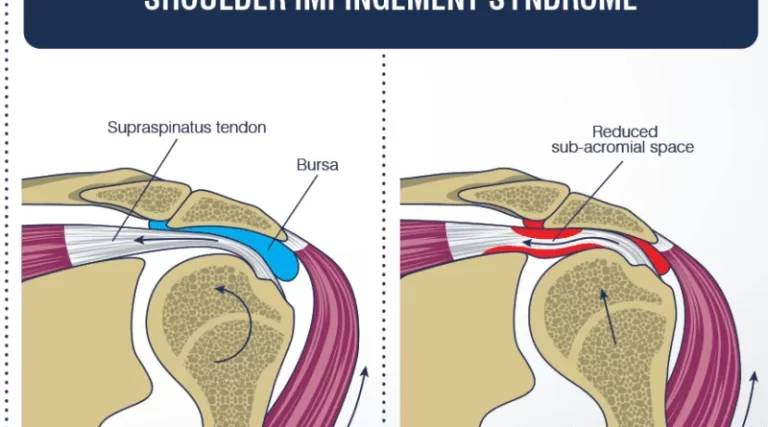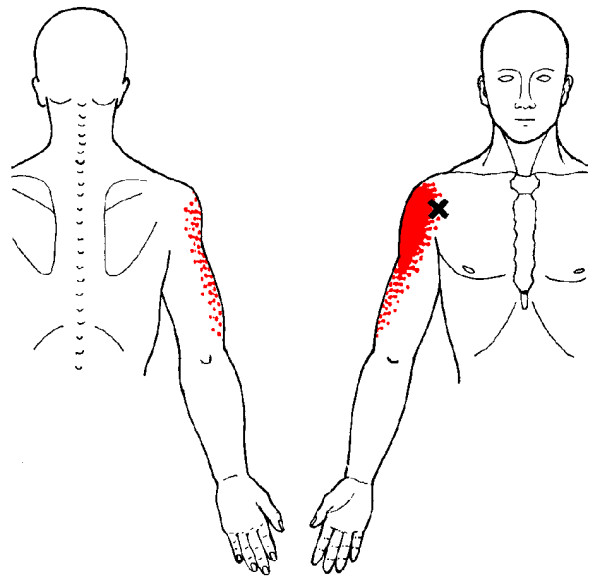9 Best Exercise for Heel Spur
Table of Contents
Introduction
Exercise for Heel spur is an important part of your overall treatment program that helps to strengthen your Heel area, relives pain and also improves flexibility and mobility of the Ankle joint.
A Heel spur is a foot condition that occurred by a bony-like growth, called a calcium deposit, that increases between your heel bone and the arch of the foot. Exercise prescription for heel spur reduces the pain and provides stretches that maintain the flexibility of calf muscle.
Heel spurs often start in the front of our heel and under our heel. They gradually affect other parts of your foot. They can increase by half an inch in length. They may not necessarily be visible to the naked eye only seen in investigations such as x-ray.
Identifying heel spurs can be challenging. during Heel spurs condition not all time you can feel pain, and swelling, and not all heel pain is related to spurs.
Heel spur symptoms
Heel Pain
Inflammation
Swelling at the front of your heel
The affected area of our heel may also feel warmish by the touch. These symptoms gradually fell to the arch of your foot. gradually, a tiny bony protrusion may be visible.
Some heel spurs may cause no symptoms at all such as pain, or swelling. Heel spurs are often identified only from X-rays investigation.
Causes of heel spur
Heel spurs may also be caused by:
- arthritis
- bruising of the heel
- excess body weight
- poorly fitted shoes
- walking gait issues
- wearing flip-flops too often
- worn-out shoes
9 Best Exercise for Heel Spur
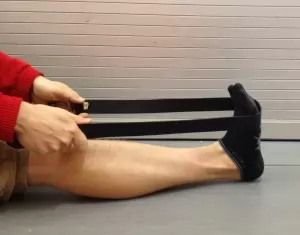
Foot flex
This simple stretch is especially beneficial to do during the right time such as when you wake up. foot flex stretches the plantar fascia of your foot. your planter fascia becomes tightened overnight.
You should use your finger to pull your toes which provides the stretch to your calf muscle (soleus, gastronomes).
Hold this position for about 30 seconds.
Performed foot flex stretch on each side two to three times.
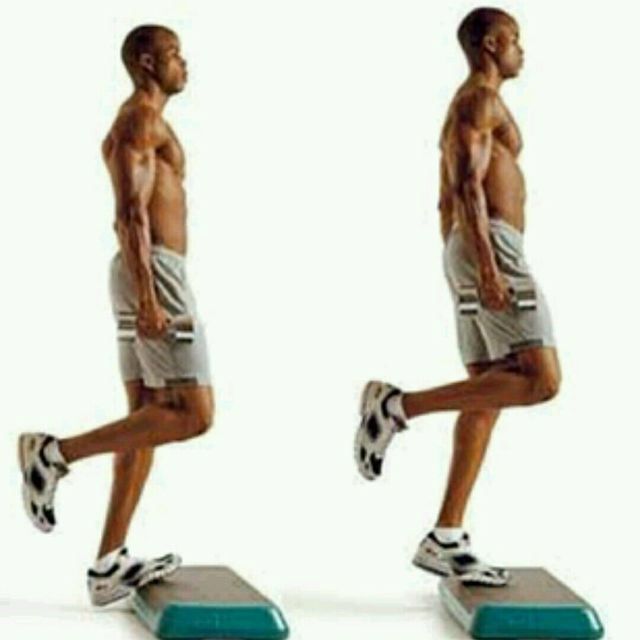
Calf stretch on a step
This calf stretch exercise provides a deep stretch to the calf muscles. This provides tension in your feet and improves the movement of your foot.
you should Stand on the ball or step of stairs on your right foot at the edge of a step, with your heel hanging off the step the stairs.
Slowly, you should lower your heel down as far as you can from the step.
Hold this position for 10 to 15 seconds which is the minimum duration.
Repeat on the left foot. performed each side 15 to 25 times.
Toe towel grab
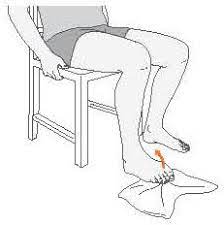
This stretch provides strengthens the muscle and stretches the arches of your feet and improves the strength of the muscle.
you should Place a small towel under your foot.
Curl your toes to grip the towel.
You should Hold this position of the foot for a few seconds.
gradually Release the towel from your toes and spread them as far apart as possible. you can be performed in a sitting position or standing position.
you can perform this stretch for 5 to 10 minutes.
Wall calf stretch
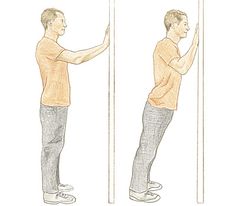
The wall stretch exercise deeply stretches your calf muscles and heels. This helps to reduce the tightness and pain in your legs and feet, which increases flexibility.
First, you should Stand a few feet from a wall with your left foot in front of your right foot.
Lean toward the wall as you take knee flexion position your left knee slightly.
Gradually put your weight into your left foot.
Keep your right knee straight as you lift your right heel off the floor. you should Feel the stretch in the posterior calf muscle.
Hold this position for 15 to 30 seconds which is the minimum duration.
performed each side three to five times.
Calf stretch with band
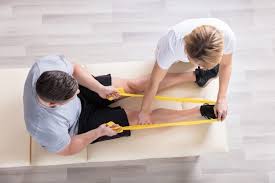
For calf stretch with the band, you will need a theraband (according to your strength) or exercise band. You can also use a napkin that is folded and make a strap. This exercise stretches your calves, which helps to prevent the muscle from pulling the plantar fascia of the foot.
First, you should Sit on a chair or mat or floor.
Place the strap under the arch of your right foot, using both hands to hold the ends of theraband.
Use the theraband to pull the top of your foot toward you, flexing your foot toward your shin.
Hold this calf stretch for 30 to 60 seconds which is the minimum duration.
performed each side three to five times.
Heel raises
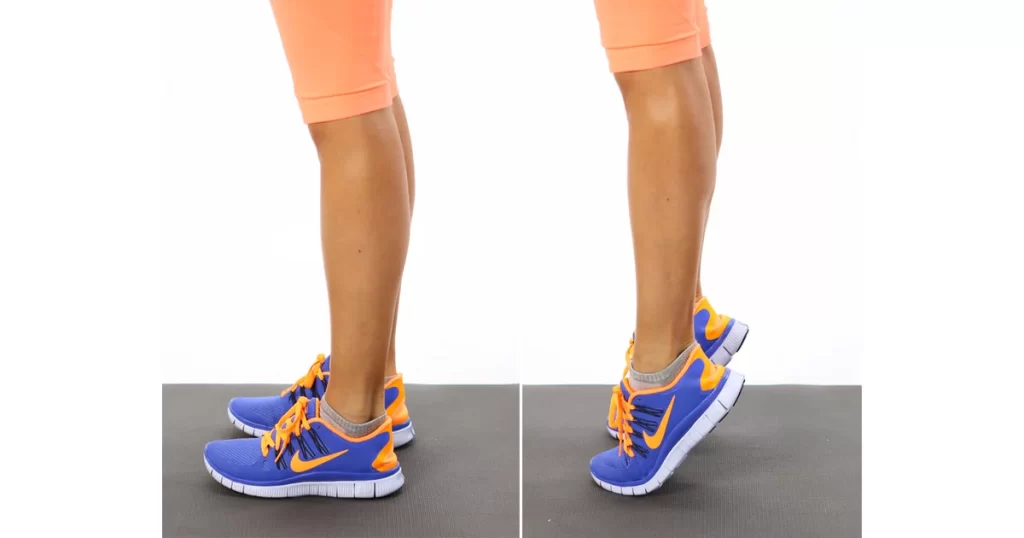
Heel-raise exercises considered in the strength-building exercises can alleviate heel soreness and improve function. The shuffle on double as a strengthening and stretching exercise if you add a rolled towel or napkins under your flexed toes. performed stretches of the plantar fascia. You can also start this exercise on both legs before progressing to one leg if you are comfortable.
First, you should stand in front of a chair or other stable surface or in front of a plinth and take a comfortable supported standing position.
Put a small, rolled washcloth on the floor. Place your toes on the towel or napkin. The towel roll should be high enough that make your toes slightly flexion of toes which is necessary.
Perform 15 -20 heel raises on one leg. considered slowly lifting on your toes, holding at the top for 5 seconds, and slowly back to the starting position.
Perform 2 sets of 20 Repeat for both legs.
Seated plantar fascia stretch
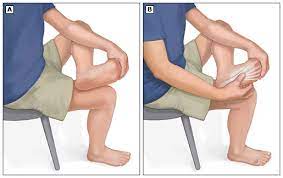
Seated plantar fascia exercises simply’ stretch considered the plantar fascia. It can help increase mobility and reduce short- and long-term heel pain.
First, you should Sit in a chair and cross one leg over the other, with your ankle resting on your opposite knee and your heel should be free.
you should put one hand on your ankle for stabilization and pull your toes used of another hand.
You should feel a stretch with the bottom of your foot.
you should hold this position for 30 seconds.
performed it 3 times.
Repeat on the other foot.
Plantar fascia massage
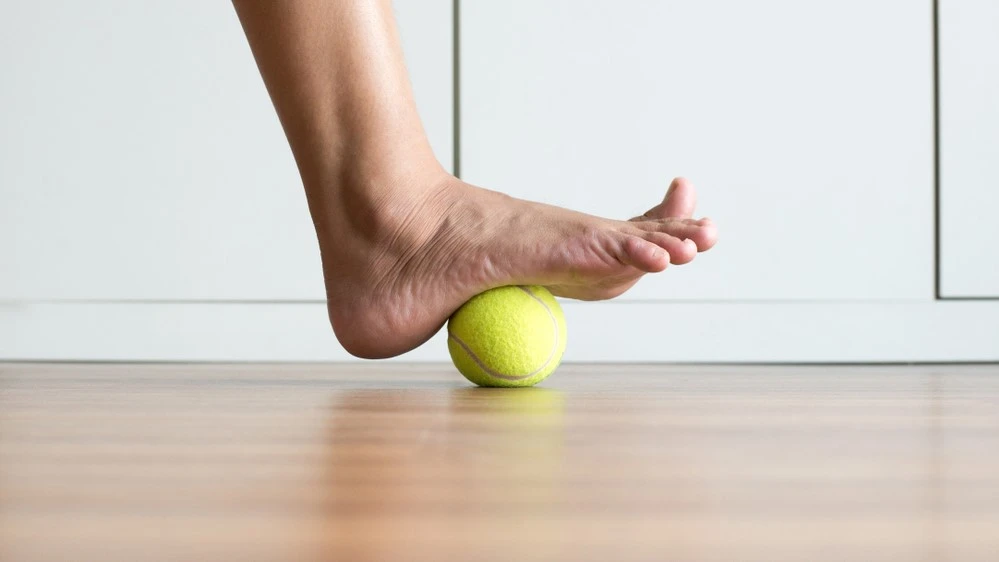
Planter fascia massaging boosts and increases circulation, decreases pain and improves flexibility and mobility.
First, you should take a Standing position with support or unsupported near a wall or other surface for stability.
Then you should Put a golf ball, soft roller, or water bottle under your foot.
Roll the device(soft roller or golf ball) under your foot, from your heel to your toes which provides relaxation.
Roll for 50-60 seconds, followed by a 15-second rest.
Performed it 5-10 times.
Resisted ankle inversion
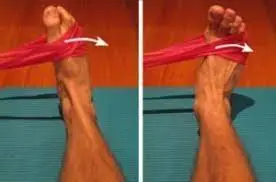
Ankle inversion exercises help you increase strength in the muscles that support your ankles and feet. This exercise requires a resistance band or theraband.
You should take a Sitting position on the floor with your legs straight in front of you.
Then adjust a resistance band or theraband around the heel spur foot Or use a theraband and make a loop and put your foot through it.
you can perform it by yourself or take the help of another person and
Move the top part of your foot inward, and pull against the band or hand.
Repeat 10 times, rest, and repeat.
change the sides of the leg and repeat on the other leg.
Other treatments
Ice. You can use an ice pack or cold therapy on your foot for 15 to 30 minutes at a time. This is especially beneficial at the end of a long day or when you have spent all of your time on your feet. Or, take a massage from put the frozen water bottle under your foot. This method is the type of massage, that reduces tightness in the bottom of your foot.
Massage. Massaging the arch of your foot promotes the mobility and flexibility of your foot and also reduces foot pain. Use your fingers and knuckles and perform a deep massage on your foot for 5 to 10 minutes at a time. One technique is to place both thumbs at the center line of your arch and move them to the outer border of your feet.
Night splints. Many people take quick and effective results by using night splints. you should wear a splint the whole night they can stretch your plantar fascia. night splint provides the plantar fascia relaxed and prevents you from pointing your feet down.
Precaution during Exercise
Stop doing exercise if you feel any discomfort while exercising.
Perform the exercise in a proper manner, give proper stretch, give proper hold, and give proper repetition.
If your healthcare is advised you should take a rest. if you feel pain while exercising.
Wear loose clothes while exercising which provide free movement to your body.
Give the stretch to the tight muscle and feel uncomfortable but you should never feel stabbing pain and sharp pain.
You should never hold your breath during exercise. during exercise, you should take a deep inhale and slowly exhale. holding the breath increases the tension in your muscle which leads to increased blood pressure.
Prevention of Heel Spurs
You should prevent heel spurs by wearing comfortably fitted footwear with shock-absorbent soles, rigid shanks, and supportive heel counters; you should wear appropriate footwear for each physical activity; warming up and doing stretching exercises before any activity which provide relaxation to the muscle; and pacing yourself during the activities.
Avoid wearing footwear with excessive-high heels and soles. If you are overweight or obese, losing weight may also help prevent heel spurs.
Exercise avoid during heel spur
Plyometrics: Plyometric exercises, also called “jump training” is one of the unfavorable exercises for heels and arches that are recovering from heel spur conditions. The exercises include short bursts of energy that make control and power in the muscles with various types of jumping. while plyometrics exercise also can chances of muscle strain and damage to the heel.
Running or Jogging: Running and jogging are two common reasons for heel pain. As the foot is lifted and strikes the floor with each step, the amount of impact generated is several times that of walking.
Burpees: Burpees might be all the rage, but they’re another top unfavorable exercise for heel pain or heel spur. Burpees include squats, planks, thrusts, half squatting position, and shifting to a plank. Because these exercises include a lot of quick movements they create the ligaments strain of the foot. or damage to the foot.
High-Impact Sports: hockey and basketball are two of the most high-impact sports for teens and adults. These high-impact sports can cause a high risk of aggravating heel pain. Both sports need a lot of running(leads to heel pain), a lot of pressure on the plantar fascia, and a lot of rapid changes in foot movement–all of which lead to small tears and injury to a strained fascia
Cardio Dancing and Aerobics: Cardio dancing and aerobics can be a lot of fun exercises. during cardio you mostly give pressure on your foot, they can also reason of heel pain because of the amount of impact and quick footwork. Cardio dancing and aerobics include lots of foot movement, and a lot of jumping, which can cause inflammation, pain, and strain to the fascia.
FAQ
What’s the treatment for heel spurs?
You should provide Rest to your heel. If you are running or jogging, then taking a break will help reduce your heel pain. Using cold packs or ice cubs for massage on painful areas.
Taking oral anti-inflammatory medicine. Wear comfortable footwear or shoe inserts that support your arches and protect your plantar fascia by cushioning the bottom of your foot.
Walking is Depending on your specific features, walking may help your heel pain reduce, or make it increase. If you experience increased pain while walking, try to take rest as much as possible until the pain reduces.
Massaging works for heel spurs because it can help loosen up the plantar fascia if you are suffering from heel spurs due to plantar fasciitis and can increase circulation to get the blood flowing again.
Main exercises for Heel Spurs
Big toe stretch: Cross your affected leg over the unaffected leg. …
calf muscle stretch against the wall: Standing position facing a wall.
Calf muscle stretching on step: Standing position facing the stairs place the balls of your feet on the bottom step.
For pain relief using ice packs or cold therapy for up to 15- 30 minutes at a time may help reduce heel spur pain by temporarily numbing the area. This method also helps reduce swelling. Cold compress therapy is more suitable compare to heat or hot packs for heel spurs because heat therapy provides a better effect on joint pain and muscle ache.
your abnormal locomotion, which places
excessive pressure on the heel bone, ligaments, and nerves near the heel. high impact exercise such as running or jogging, especially on hard or rough surfaces. Poorly fitted or badly worn footwear, especially those lacking appropriate arch support. Excess weight and obesity put lots of pressure on your heel.

